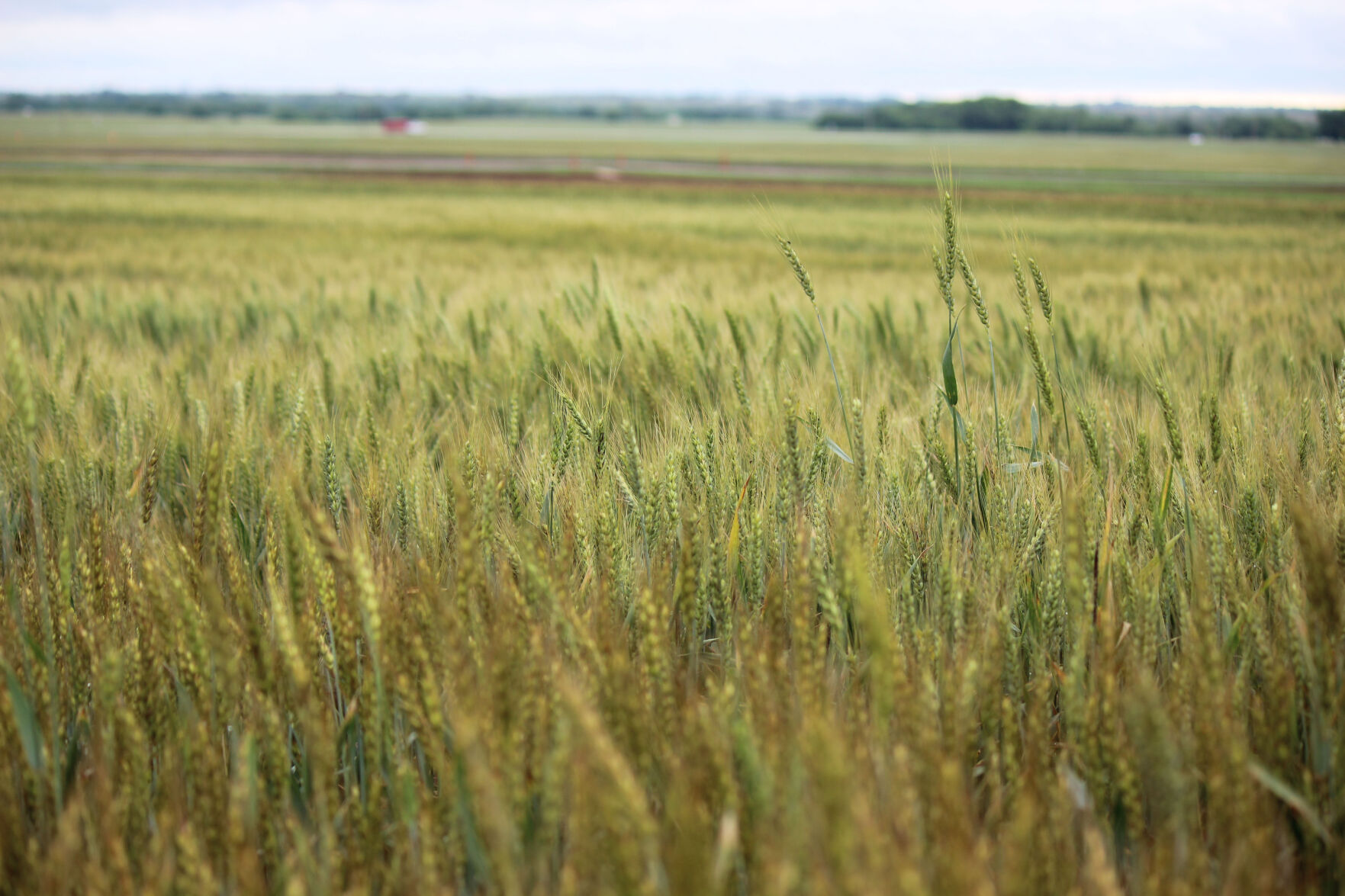
Wheat production depends on variables that are different from other crops, and one economics expert said growers can cover their variable costs this year as they plan ahead.
Gregg Ibendahl, an associate professor in the department of agricultural economics at Kansas State University, told producers they should expect tight margins for the foreseeable future. The decline in future prices and at the elevator are likely to level out now.
He was one of the speakers at a recent Kansas Wheat Rx, which was a partnership between Kansas wheat and K-State Research and Extension. Seminars were March 7 in Dodge City and March 8 in Wichita.
Fertilizerwas much higher two years ago for all the major crops and has come down from those record high prices, he said. While driving up grain prices, the Russian invasion of Ukraine also interrupted fertilizer supplies.
“There is a strong correlation between fertilizer and the price of corn,” he said.
Machinery is still the biggest cost, but it continues to get smaller each year as a result of genetically modified crops and changes in farm practices. Fertilizers are the No. 2 expense with seed costs No. 3.
He projects anhydrous ammonia will be in the $800 to $900 per ton range this year. The reason he has upped the expense is that it depends on the price of oil and gas. Many of this year’s projections in the $700s were based on the price estimate of a barrel of oil at about $75 a barrel, and it has been trending upward of $80 a barrel.
When the Russian invasion occurred in February 2022, the barrel price shot up to more than $100 a barrel. While the price came down, it is now in the $75 to $80 a barrel range. Russia is also the No. 2 exporter of oil, after Saudi Arabia.
Russia is the biggest exporter of wheat in the world but is also the top exporter of NPK, Ibendahl said. NPK fertilizer contains nitrogen, phosphorus and potassium.
Ibendahl said that, in his opinion, traders are underestimating risk that would push oil prices higher, and that will push fertilizer costs higher. United States producers may make adjustments in spring planting. With corn prices down several dollars per bushel compared to November, they may add soybean acres and reduce corn acres.
Ibendahl said inflation also has to be considered. While it has cooled, he believes the actual inflation rate is closer to 5% than the government’s estimate of 3%, and those costs have to be factored in input costs.
He expects fuel costs for transportation to be high.. U.S. refinery capacity is still below 2019 levels, and he does not expect that to change. The U.S. has not built a refinery since 1976, and COVID pandemic lowered output.
Production emphasis has been on gasoline production and that has come at the expense of over-the-road diesel, which is important to farmers and ranchers. At $80 a barrel that translates into a nationwide average of $3.40 a gallon for gasoline and $3.85 a gallon for diesel.
“The diesel premium is going to stay in place above historical norms,” he said.
If refinery capacity is increased that will stake about four to five years for it to translate into the marketplace, he said. Refineries are reluctant to add capacity. Ibendahl said if motorists buy more electric vehicles that could lower the demand for gasoline and refiners might have incentive to switch capacity to over-the-road diesel and that could lower diesel pump prices.
In the meantime, farmers need to look for opportunities to lock in diesel prices when they can.
From a wheat marketing standpoint, he noted that fellow Extension agricultural economist Dan O’Brien said the CME Group futures prices are not encouraging and the price of $5.56 a bushel on March 6 is a scenario that could linger much of the year.
Hard red winter wheat, the primary wheat grown in Kansas, has been hurt by exports but also changes in crop acres as farmers since 1990 have steady been shifting acres to corn and soybeans.
O’Brien is seeing a build up in inventory. Mexico is the top destination for U.S. wheat, followed by the Pacific Rim, most notably the Phiippines and China. The strong U.S. dollar is making it more difficult to sell grain overseas. The U.S. was once the top exporter of wheat but is now No. 4, solidly behind Russia, European Union, and Canada. Australia and Ukraine round out the top six.
“If something happens to Ukraine it could make a difference,” Ibendahl said.
He did say that even with disappointing per bushel price, a wheat producer still has an opportunity in the short run to cover their variable costs and plan for future.
Other topics included cover crops, soil health, role of wheat in a cropping system, soil fertility and fungicides.
Dave Bergmeier can be reached at 620-227-1822 or [email protected].



